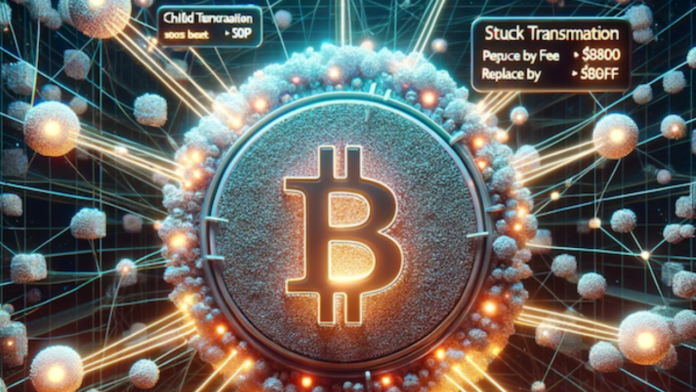Did you know that a low-fee Bitcoin transaction can turn into a digital version of ‘Waiting for Godot’? When your Bitcoin transaction gets trapped in the mempool, it’s neither here nor there – just floating in a limbo of digital signatures and unconfirmed expectations. This predicament, often caused by setting too low a transaction fee, leads to an indefinite waiting game: the transaction could either finally get confirmed or be ‘forgotten’ by network nodes.
This ‘forgetting’ isn’t a case of digital amnesia but a necessity. Nodes, each with a mempool capacity around 300MB, start dropping transactions with the lowest fees to make space for more lucrative ones. This might sound like a financial purgatory, but there’s a silver lining – your funds aren’t lost. They’ll eventually find their way back to your wallet or get confirmed.
How long does this suspense last? It’s a bit of a lottery, depending on network traffic and other variables. On average, it might take a few days, but at times, the wait could extend much longer. During this period, rest assured, your funds are safe from the risk of permanent loss.
But what if you’re in a hurry? Enter ‘Child Pays For Parent’ (CPFP) and ‘Replace By Fee’ (RBF), two ingenious strategies to expedite your transaction’s journey from the mempool to a confirmed block.
CPFP is a knight in shining armor for recipients. If you’re expecting funds from a stuck transaction, you can use those unconfirmed funds in a new transaction, tagging along a higher fee. This higher fee entices miners to confirm both your new and the stuck transaction together.
RBF plays a similar role but in a different style. Here, you rebroadcast the same transaction with a heftier fee, urging miners to pick this version over the old, stingier one.
If you find yourself in this digital quagmire, here’s a step-by-step guide to navigate out:
Check for RBF: Use a blockchain explorer to see if RBF is enabled. If yes, and your wallet supports it, use this feature to rebroadcast your transaction with a higher fee.
Try CPFP: If RBF isn’t an option, use CPFP, but this works only if you have control over the receiving wallet or are sending back to yourself, and your wallet supports it. You can then initiate a high-fee transaction using the pending funds, potentially pushing both transactions through.
Mining Pool Accelerators: If the above two steps don’t work, consider a mining pool transaction accelerator like ViaBTC’s txaccelerator. This service involves an additional out-of-band payment but can manually push your transaction in the next block mined by the pool.
Last Resort Options: If all else fails, your options boil down to waiting it out, getting a mining pool friend to help, or – if you’re feeling particularly lucky – mining a block yourself (though this is akin to winning a lottery).
In a conversation with a BMP Dev, a user named Machine Head expressed concern over a transaction stuck for 12 hours, with BMPBRC advising against bumping up the fee, implying the transaction would either go through eventually or return to the wallet if ‘forgotten’.
In the world of Bitcoin transactions, stuck funds aren’t a dead end but a temporary pause. With a mix of patience and strategic maneuvers like RBF and CPFP, users can navigate the complex yet fascinating world of Bitcoin transactions, ensuring their digital assets don’t get lost in the ether.
Bitcoin fee estimator and calculator : https://bitcoinfees.net/


